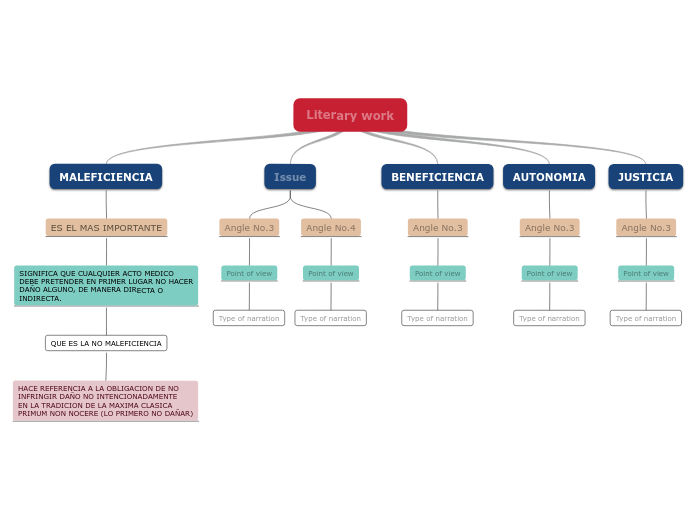作者:Arleth Maita Cáceres 4 年以前
239
PRINCIPIOS Y PRECEPTOS ETICO

作者:Arleth Maita Cáceres 4 年以前
239

更多类似内容
Type in the name of the multiple-perspectives text.
Example: Bridge to Terabithia by Katherine Paterson
Decide on the fourth point of view
Type in the name of the last character whose perspective on the issue you are going to present.
Example: Leslie Burke, Jesse's new next-door neighbor, and best friend.
Point of view
Type in a relevant quote that highlights the character's point of view. Try to follow a citation format: author's name, chapter, and page.
Example: I can't get the poetry of the trees,' he said. She nodded. Don't worry,' she said. You will someday. He believed her.' (Paterson, 4. 24)
How is the viewpoint introduced in the story?
Choose an answer:
Whose character does the third point of view belong to?
Type in his/her name.
Example: Mr. Aarons, Jesse's father.
What does the character think, say or do that suggests their perspective on the issue?
Type in a quote and try to maintain the citation format.
Example: 'He would like to show his drawings to his dad, but he didn't dare. (...) He'd thought his dad would be pleased. He wasn't. What are they teaching in that damn school? he had asked.' (Paterson, 2.8)
Type of narration
What kind of narration introduces the viewpoint?
Choose an answer:
Identify an important issue from the text that is being presented from different angles. Type it in.
Example: Jesse's drawing talent.
Decide on the second point of view
Name the character (it can either be the main character or one of the supporting characters) whose point of view you are presenting.
Example: Miss Edmunds, Jesse's music teacher.
Type in a quote that points out the character's position about the issue.
Try to follow a citation format: author's name, chapter, and page.
Example: 'She said he was unusually talented, and she hoped he wouldn't let anything discourage him.' (Paterson, 2. 8)
QUE ES LA NO MALEFICIENCIA
How is the viewpoint introduced in the story?
Choose an answer:
HACE REFERENCIA A LA OBLIGACION DE NO INFRINGIR DAÑO NO INTENCIONADAMENTE EN LA TRADICION DE LA MAXIMA CLASICA PRIMUM NON NOCERE (LO PRIMERO NO DAÑAR)